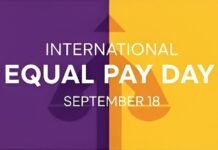A key advantage of certifications is that it is not the mainstream qualification which an individual hold. Certifications are taken up by individuals who are pursuing another activity on a fulltime basis and see the opportunity that they can squeeze in more learning side by side. In most developed markets professionals would search for a certification program which complements an area of work or aspiration and the individual tends to pursue it. In developing markets, it is a concern that individuals tend to make the mistake of pursuing certifications on a fulltime basis. This leads to the individual being theoretically equipped but practically stunned.
Certifications are designed in such a way that there is more learning through the way if you are working. One would appreciate the theory and practice along with the interlinkages between the two. Let me give an example: Efficient market hypothesis is taught in a lot of certifications and is explained with description on the strength of the hypothesis. It expresses what characteristics are seen in what type of markets and what strategies would typically work. Prima facie it looks theoretical but when one can distinguish and put their domiciled market in the bucket of either strong, semi-strong or weak one would appreciate the theory put forth by Eugene Fama of the University of Chicago in early 1960s.
A key advantage to certifications is that they can start from the scratch unlike say a post graduate program. This is very important given the fact that a miniscule audience pursues 2 bachelors and hence masters in a separate field can be a steep climb. Most certifications would have a list of pre-requisites before appearing or preparing for the first level. This sets the expectations from a learning outcome perspective and candidate is forearmed.
There are various ways to divide finance such as the type of markets (public or private) or the type of asset classes (traditional or alternative). Taking cue from the later division, a traditional asset class is defined using an inclusive definition and represents stocks, bonds and cash. Similarly, if something that is not traditional is an alternative asset class (which is a definition by exclusion).
The CFA program by the CFA Institute covers all aspects of finance but has primary focus on traditional assets. The CFA is a 3-level course with each level going deeper in the majorly static subject list. CFA has prime focus in the equity research domain and is considered the gold standard in equity research. CFA is the most successful global finance accreditation and is recognized by the industry. Upon completion of the CFA and submission of experience the CFA institute provides the charter. The individual then joins the ever-increasing community of CFA members by aligning oneself to the CFA society of that country. CFA in recent years has also introduced a concept called at CPD (continued professional development) but has not made it mandatory for individuals to certain number of hours per year. The CPD hours for every member are recorded as well of every candidate or non-member.
The private markets are growing at an unprecedented rate in India. This is also evident by the fact that a single PERE (private equity in real estate) player has invested close to USD12 billion in India. This is equal to the size of 8.5% of all equity mutual funds put together. Large global players individually are more than the size of the equity mutual fund industry in India. Such is the amount of money in the alternative investment space. Chartered Alternative Investment Analyst (CAIA) is a designation for these markets. It is the global benchmark for alternative assets. CAIA is a 2-level course and requires professional experience for the charter to be conferred. The CAIA course predominantly covers private equity, venture capital, hedge fund, structured products, derivatives and real assets. The examination for CAIA is held twice a year (March and September) and hence it is possible to clear CAIA in period of 12 months. Close to 60% of individuals take 18 months to clear both levels.
The alternative investment space is not for all since the industry is small in terms of the number of people it employs. One hence must be decisive and competitive to make a head start there. Fundamentals of alternative investments (FAI) is another program which an individual can pick up for dipstick on the level of interest and competency. The FAI is a 21-hour video-based course which has questions after each of its modules. The candidate must get a minimum of 7 out of 10 in order to move to the next module. If the candidate does not score the minimum required passing grade, then the candidate must redo the module. The FAI has a 100% pass rate. The FAI lays the foundation stone for individuals who have interest in the alternative investment space but are not certain about pursuing a career in it.

About author: Mr Shreekant has a wide knowledge base across asset classes and finance domains. Characteristically Shreekant had completed CFA, CAIA and FRM at the age of 25 and also held double masters from Mumbai University.
Shreekant’s experience ranges from an investment banker on the debt capital market side to dealing on the sell side for non performing assets and later in his career rating them as well. His role at Deutsche Bank was on valuing structured finance assets in the EMEA region.






